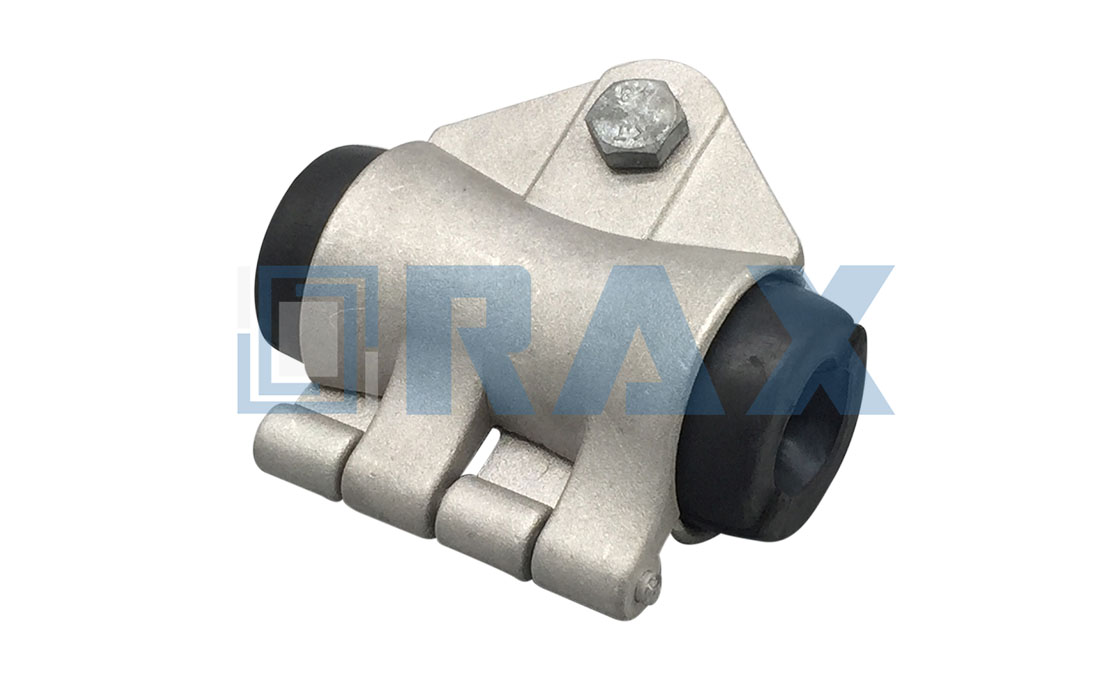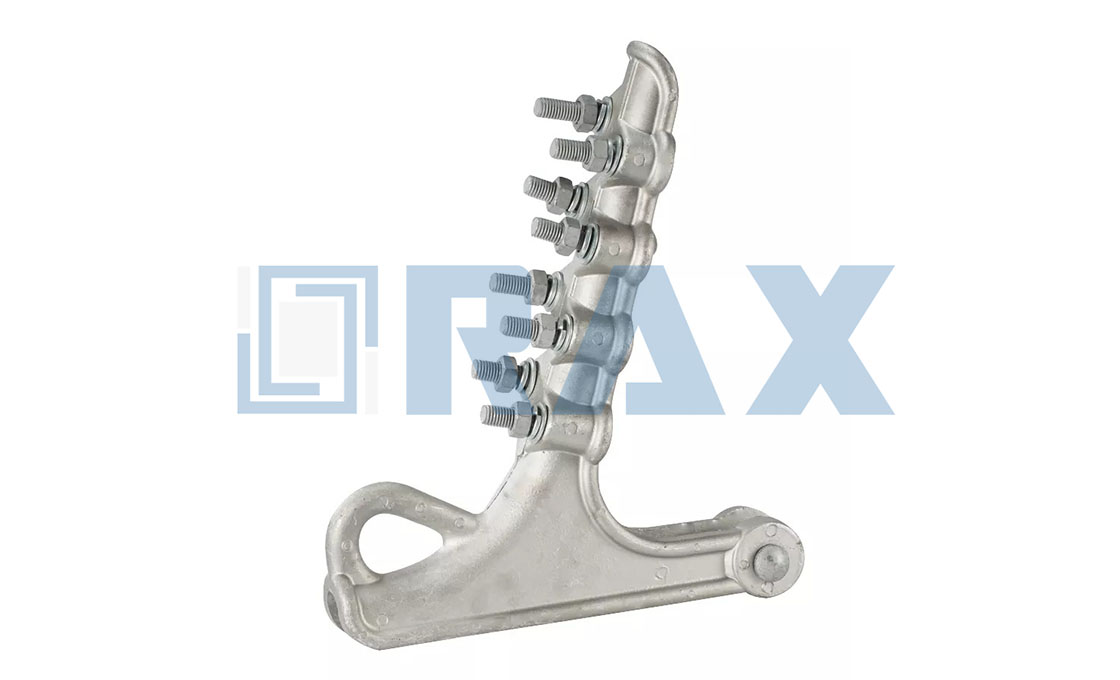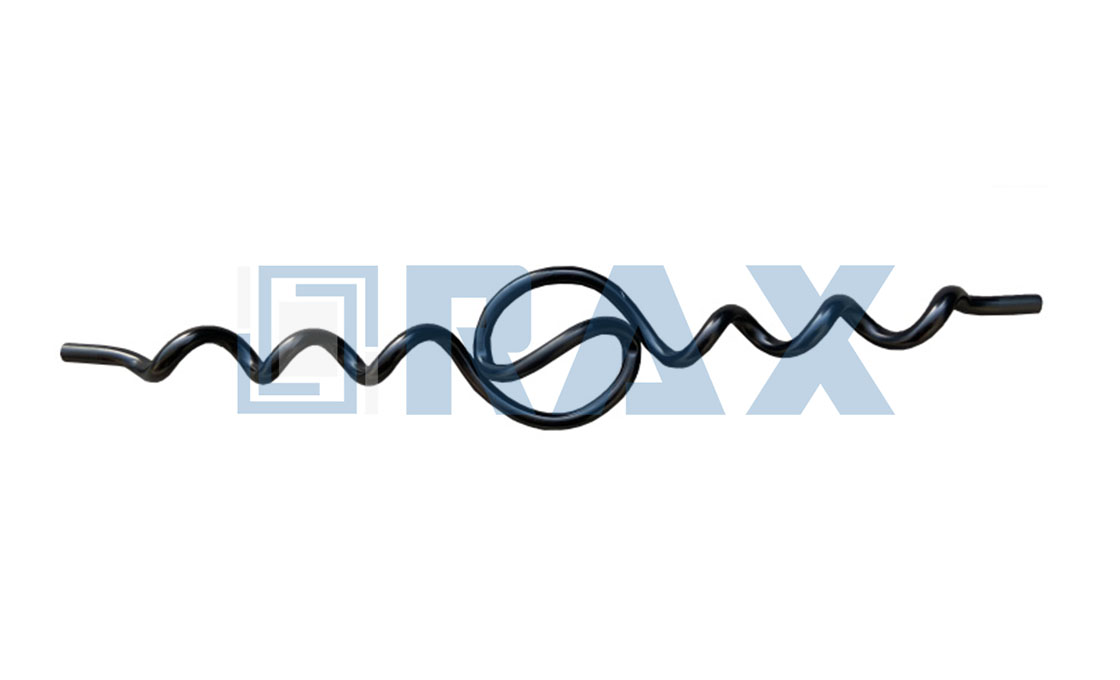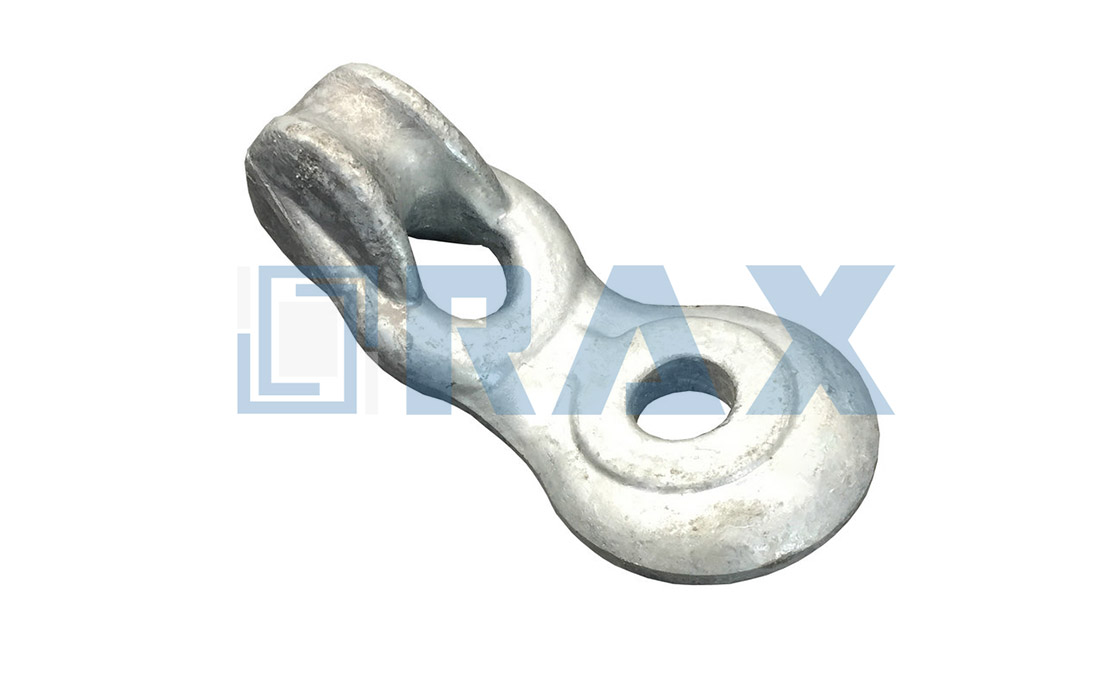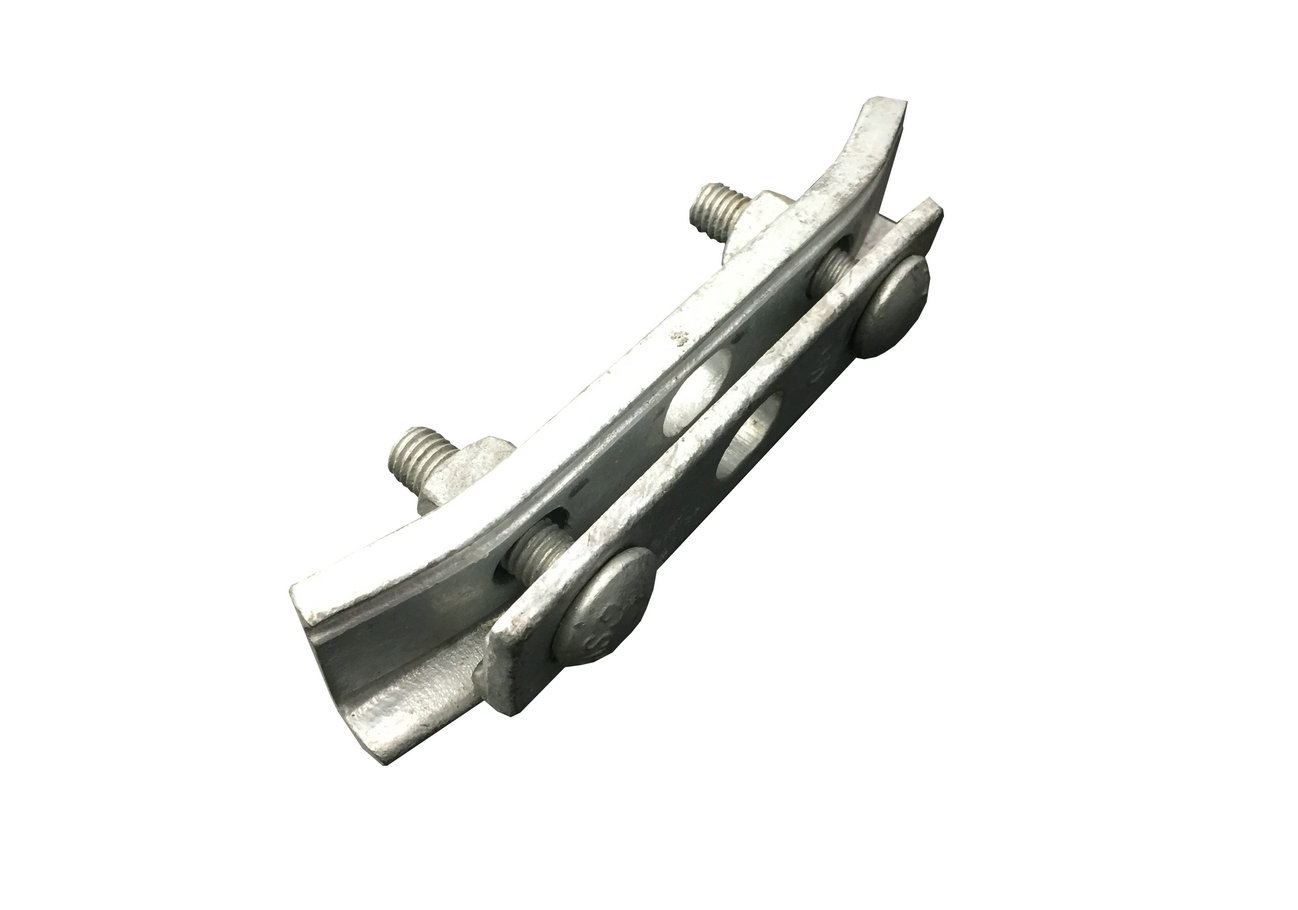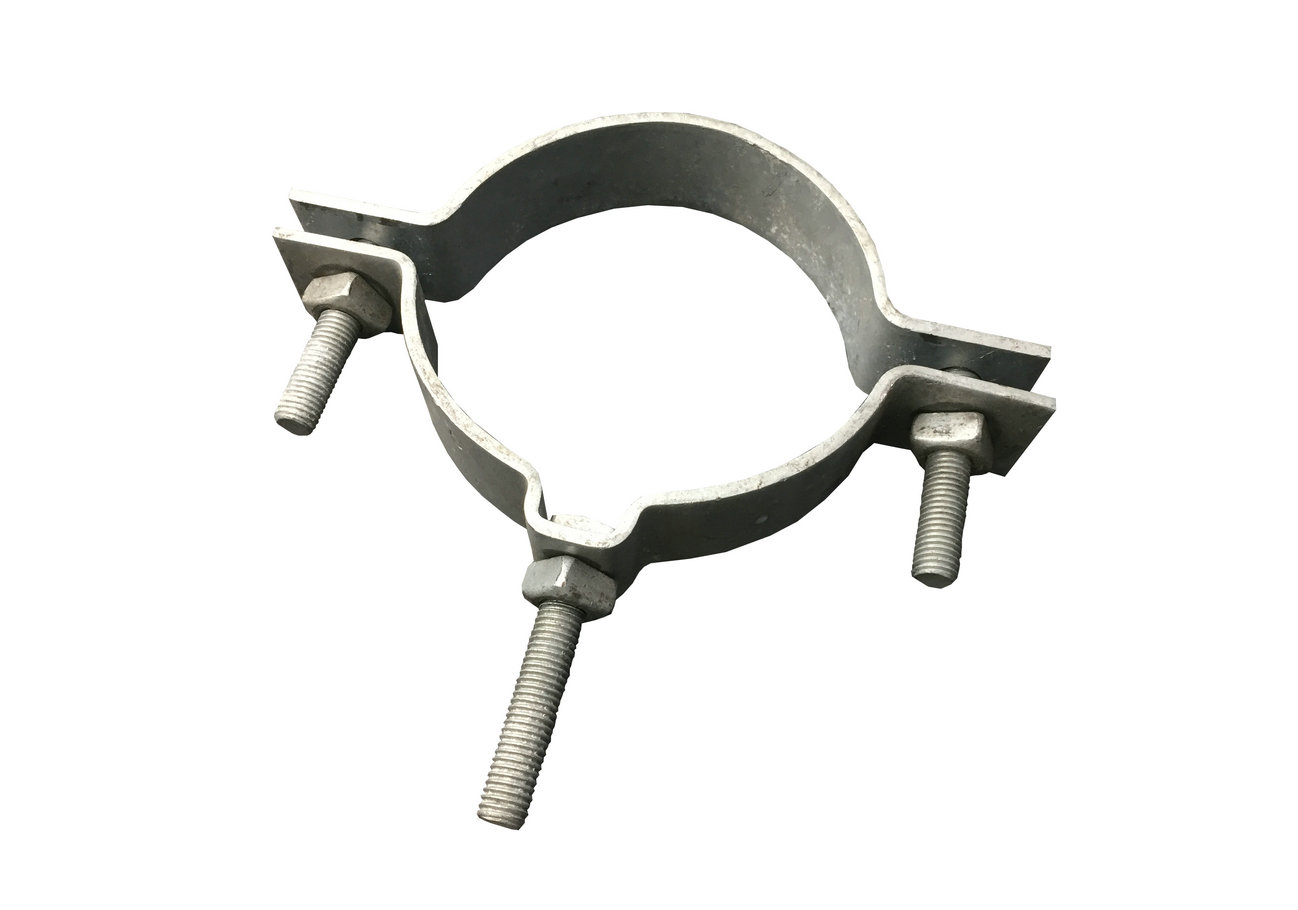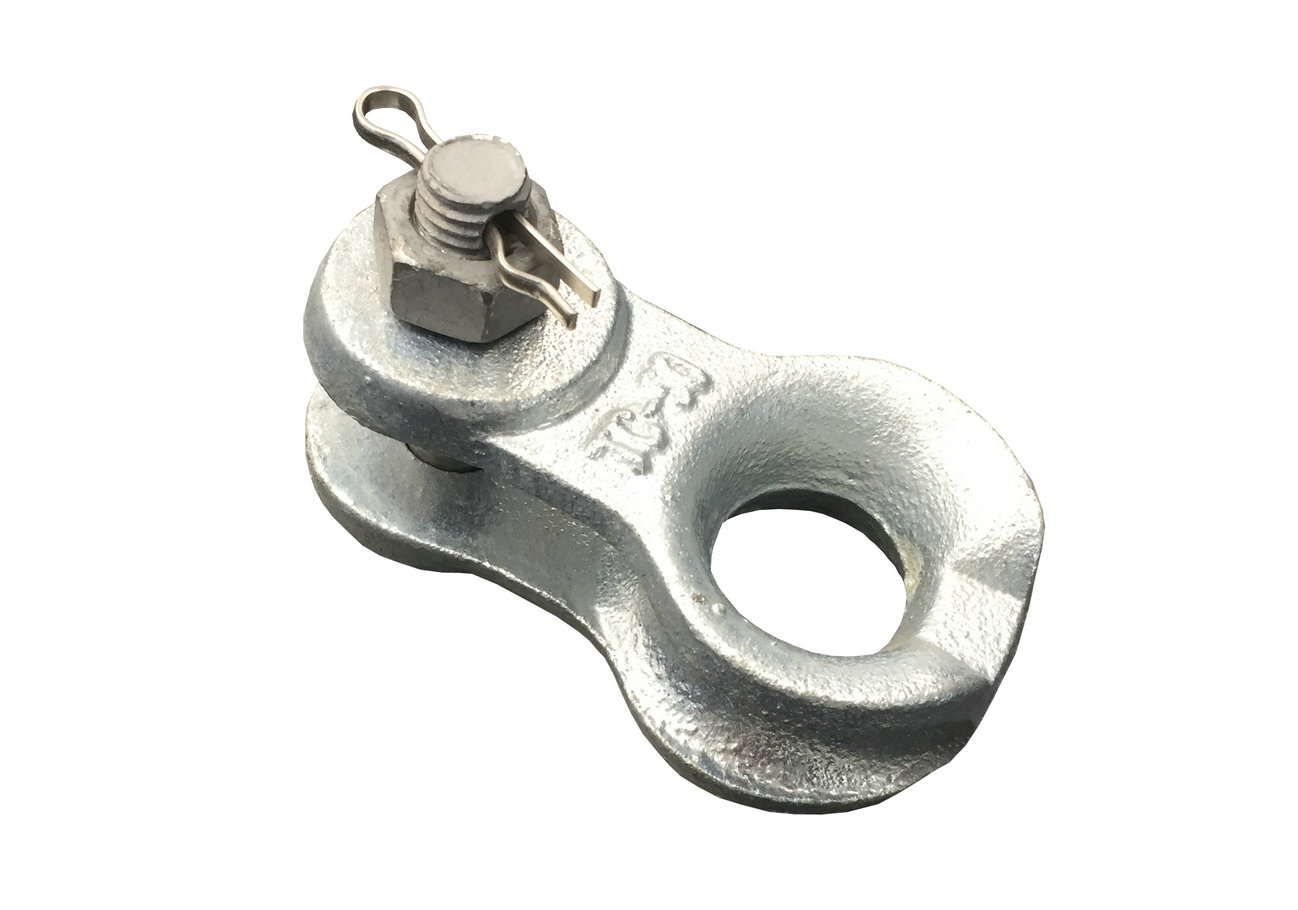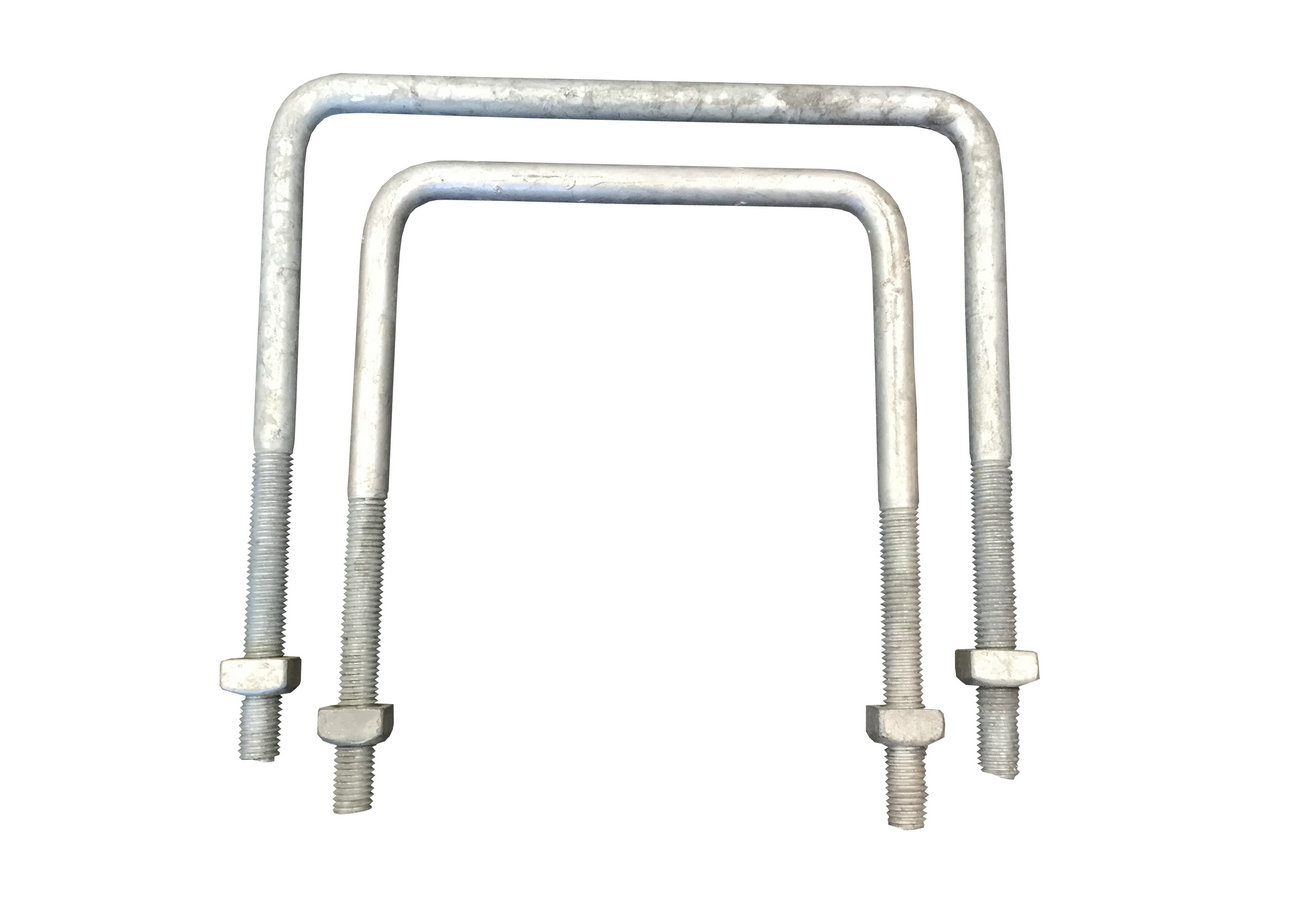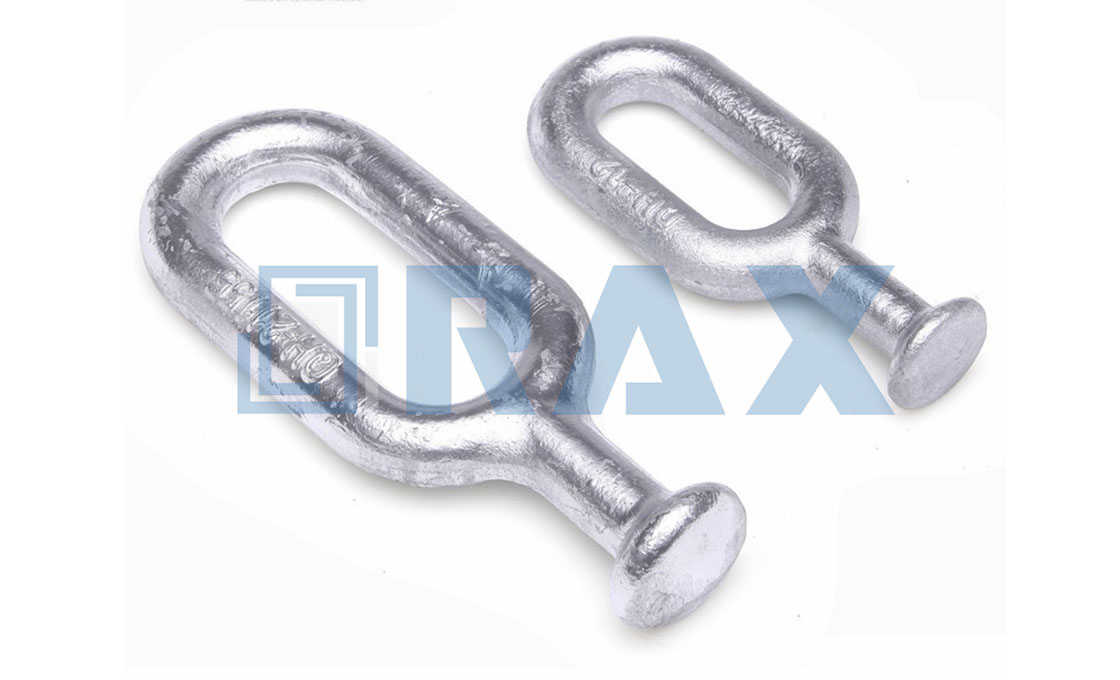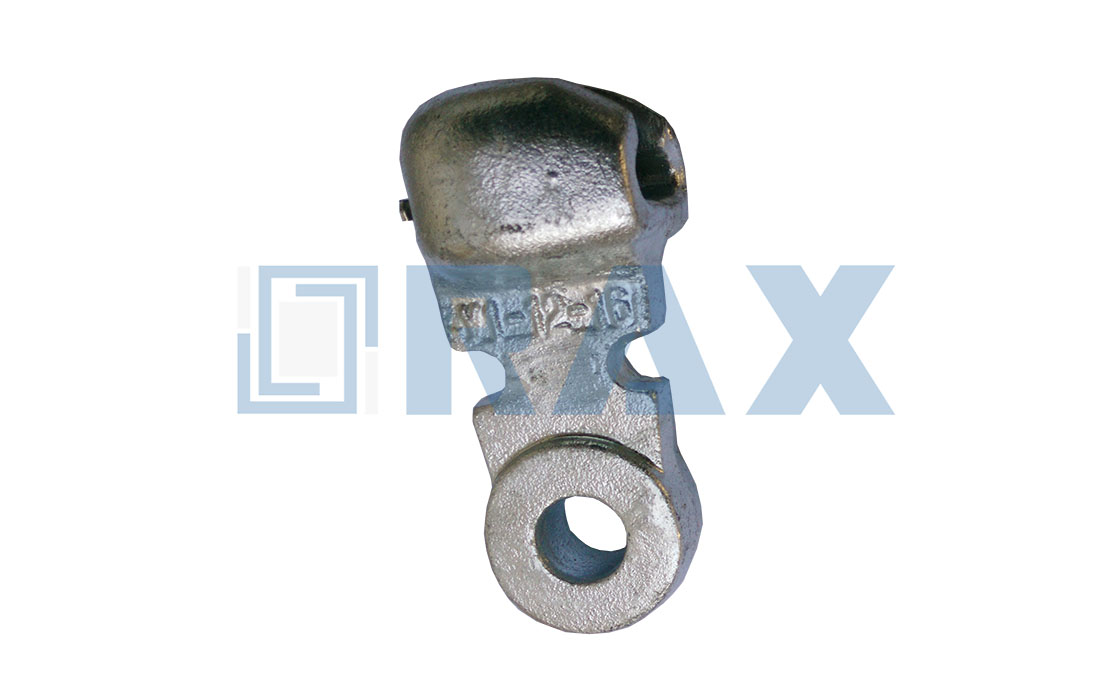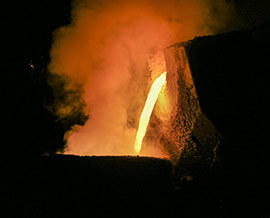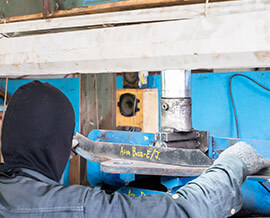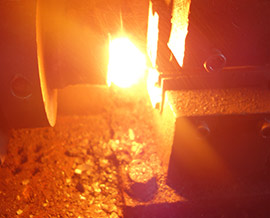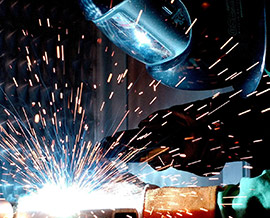Power Fitting
Power fittings are all kinds of accessories which used to connect or support the electric device so that the pole line will realize the power delivery. Power fitting is also called power line accessories, power pole hardware, power line fittings, electric power fittings. Power fittings have the feature as below:
- High breaking load strength
- Hot-dipgalvanized
- Smooth surface
- Accurate size
- Permanent on quality
Power fitting is made according to different market requirements. Each market, there its own standards. Rax Industry knows different market standards.
Where it is needed, there is Rax Industry power fitting. If you want to know more about Rax Industry power fitting, see more below.
Application of Power Fitting
Multiple industries, starting from aviation, telecommunication, automotive, electrical, marine, fabrication, mining, medical, aerospace, etc. make use of power fitting for various needs that they have.
Owing to the vast application of this hardware in varied industries, different elements like aluminum, steel, platinum, titanium, copper, and silver are used to manufacture them, depending on the need and the industry it is going to serve.
Owing to the fact that these power fittings distribute and support utility lines for a long period of time, various tests are conducted to enhance their strength and mitigate any and all weaknesses.
As a leading power fitting manufacturer in China, Rax Industry always supplies the customer with quality power line accessories and provides quality after-sales service. That is really what Rax Industry is all about.
Before loading into the container, All Rax Industry power pole hardware should pass its own in-house quality test program. Beyond this, however, Rax Industry controls every step during the production to make sure its products can pass the customer/third party test like SGS.
Power Fitting: The Complete Guide
Rax Industry Power fitting is just one small part of the power line construction. When the electrical company completes a project, they also need other electric equipment like pole fastener, pole insulator to finish the whole line.
According to the Application, the power line hardware is devised into utility pole hardware, pole attachment hardware, telephone pole hardware, transmission line accessories, messenger cable hardware, power distribution hardware.
- Chapter 1: Types of Steel Cross Arms
- Chapter 2: Rax Industry Power fitting Raw material
- Chapter 3: How to make Rax Industry Power fitting?
- Chapter 4: Why customers prefer suppliers Chinese?
- Chapter 5: Power fitting installation
- Chapter 6: An Essential Guide to Power Fittings-
What are Power Fittings? - Chapter 7: Properties of Power Fittings
- Chapter 8: Tips for Choosing a Power Fitting Manufacturer
Types of Power fitting
Rax Industry Power fitting includes steel cross arm, socket clevis, ball clevis, yoke plate, stay rod, guy thimble, secondary rack, secondary clevis, pole band, anchor rod, guy clamp, pole top bracket, pole top pin.
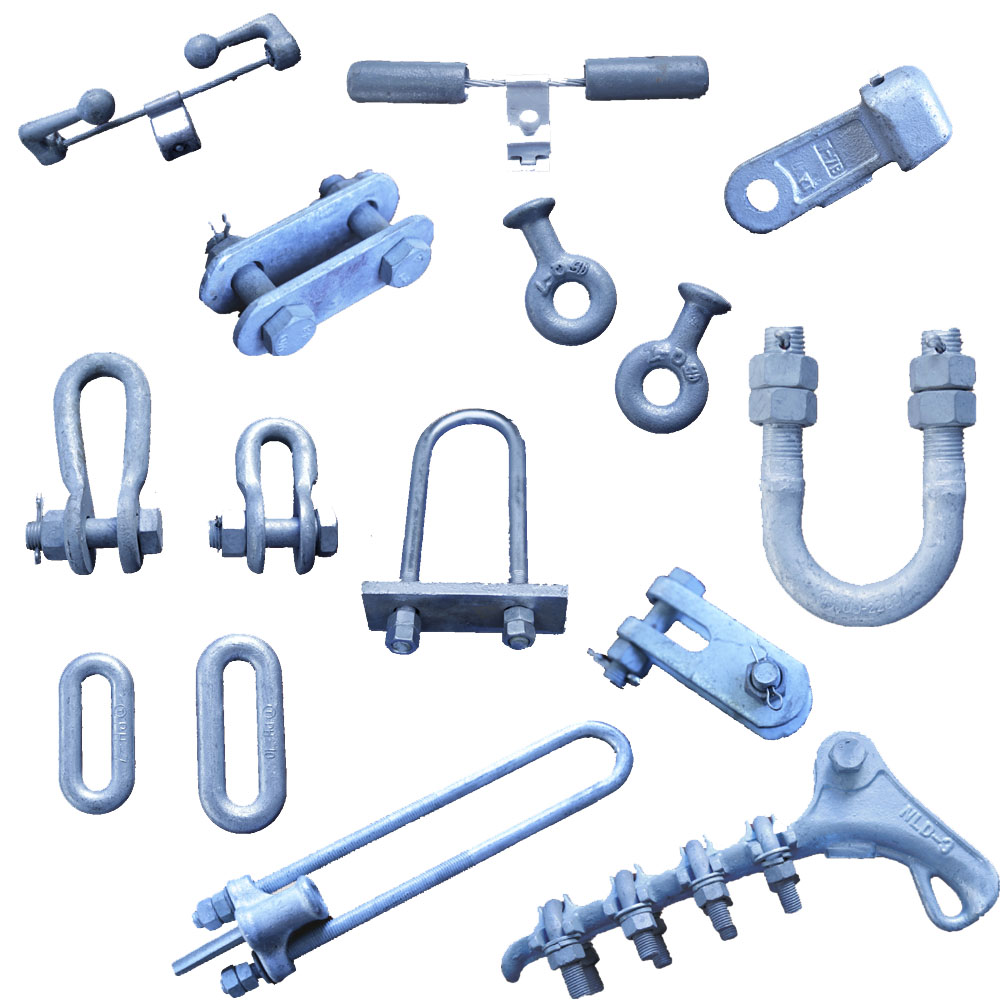
Power fitting
Steel cross arm
Rax Industry steel cross arm is used on low voltage. It was assembled 300m distance from the top of the pole. Rax Industry steel cross arm is assembled with the insulator which is used to burden the four power line wires. The angle steel cross arm or terminal cross arm is fabricated from steel complying with BS4360 and amendments. After fabrication is completed, all the steel cross arms will be sent to do hot-dip galvanizing according to BS729
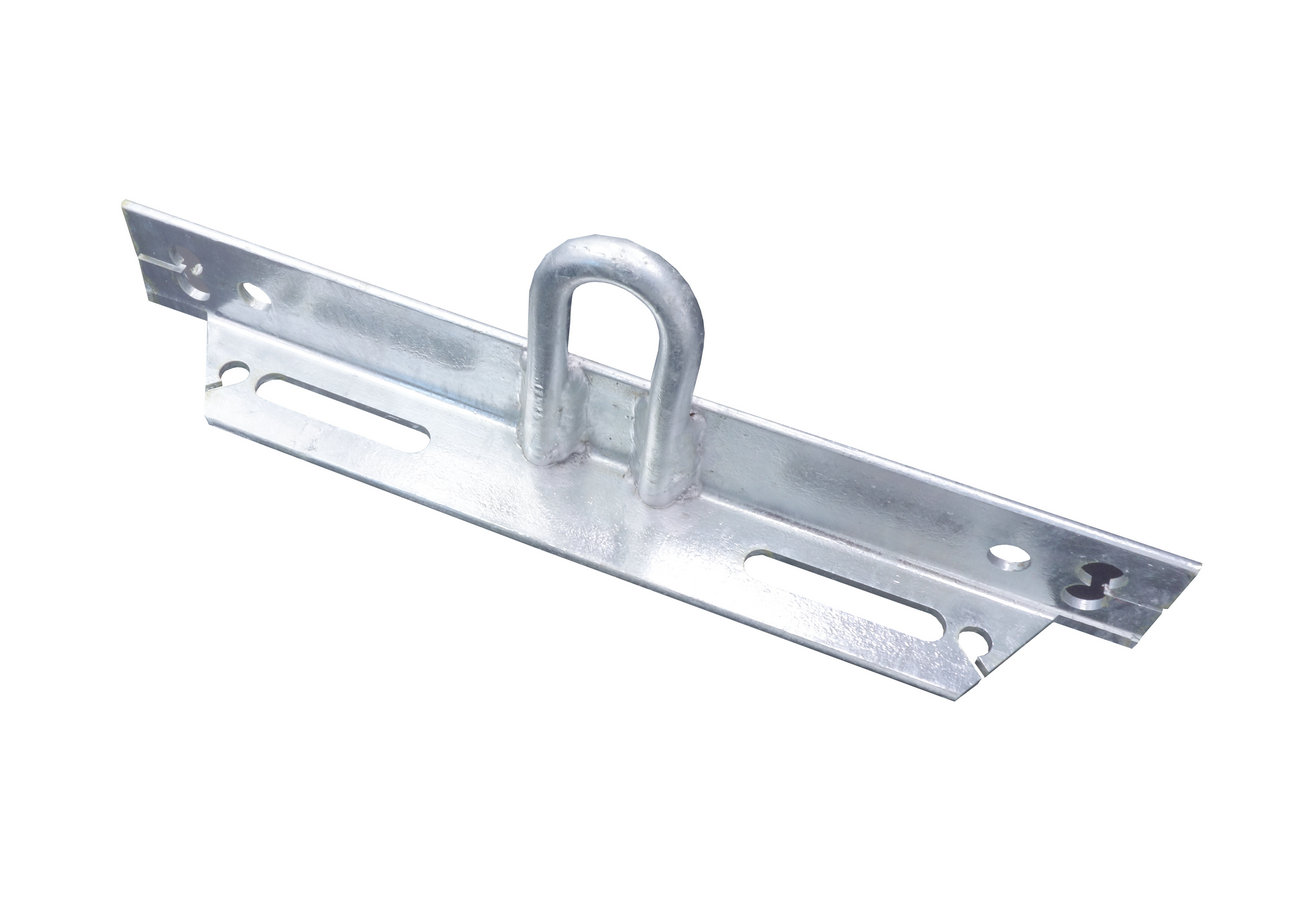
Steel Cross Arm
Secondary rack
Rax Industry secondary rack is assembled on the pole. There are insulator pins that go across the stud pin to support the power line wire. According to the exact application, you can choose different spool number secondary rack.
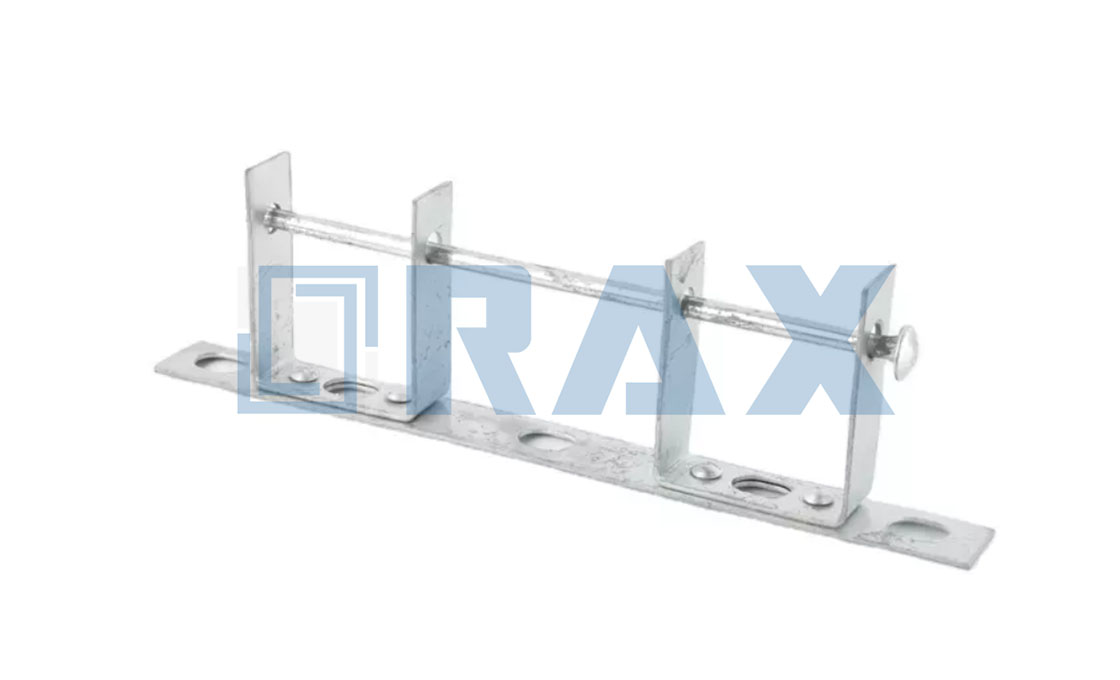 Secondary Rack
Secondary Rack
Stay Rod
Rax Industry stay rod makes it possible that the stay wire grips the ground firmly. According to the different voltage and distance between the two poles, you can choose 1800mm or 2440mm types of stay rod.
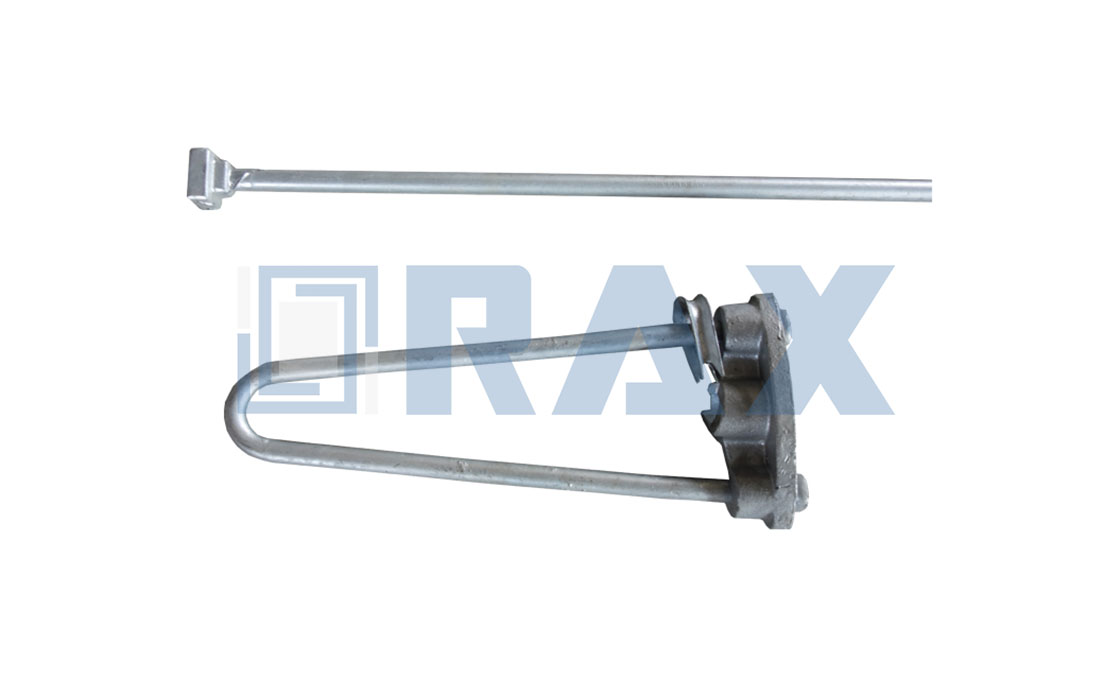 Stay Rod
Stay Rod
Anchor rod
Anchor rod is designed different shape from the stay rod, but has a similar function as stay rod. Anchor rod forged with two-eye thimble or three-eye thimble head according to the wire number application.
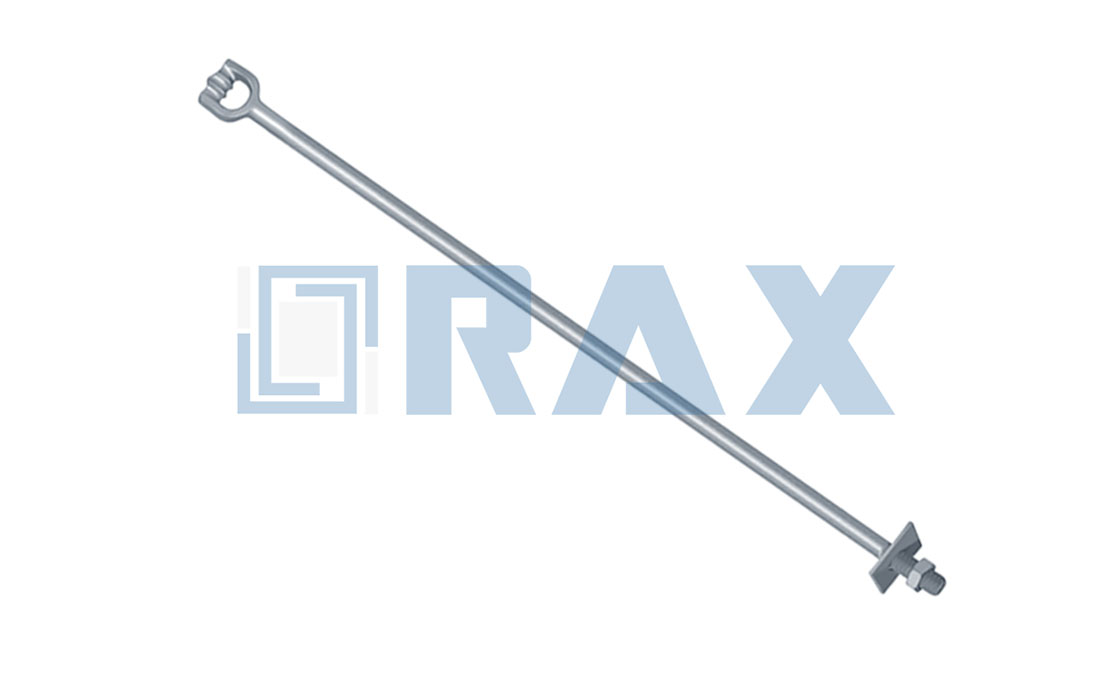 Anchor Rod
Anchor Rod
Guy thimble
Rax Industry guy thimble is mainly assembled on the stay set or assembled on the adjusted pole band. Rax Industry guy thimble has the function to hold the stay wire to avoid damage on the one touchpoint between guy wire and stay bow.
Guy Thimble
Guy clamp
There are two grooves at the guy clamp, one groove is for the guy wire, the other groove is to connect the cable or conductor.
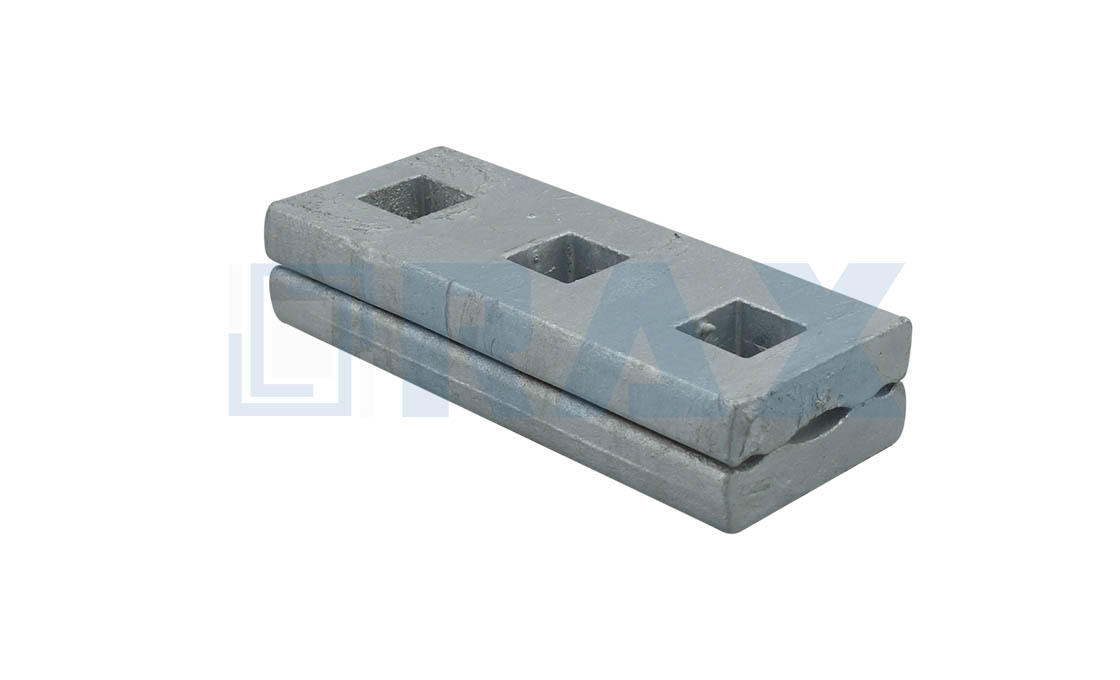 Guy Clamp
Guy Clamp
Pole top bracket
Rax Industry pole top bracket is an assembled insulator at the head. The pole top bracket is fastened on the pole to support the conductors.
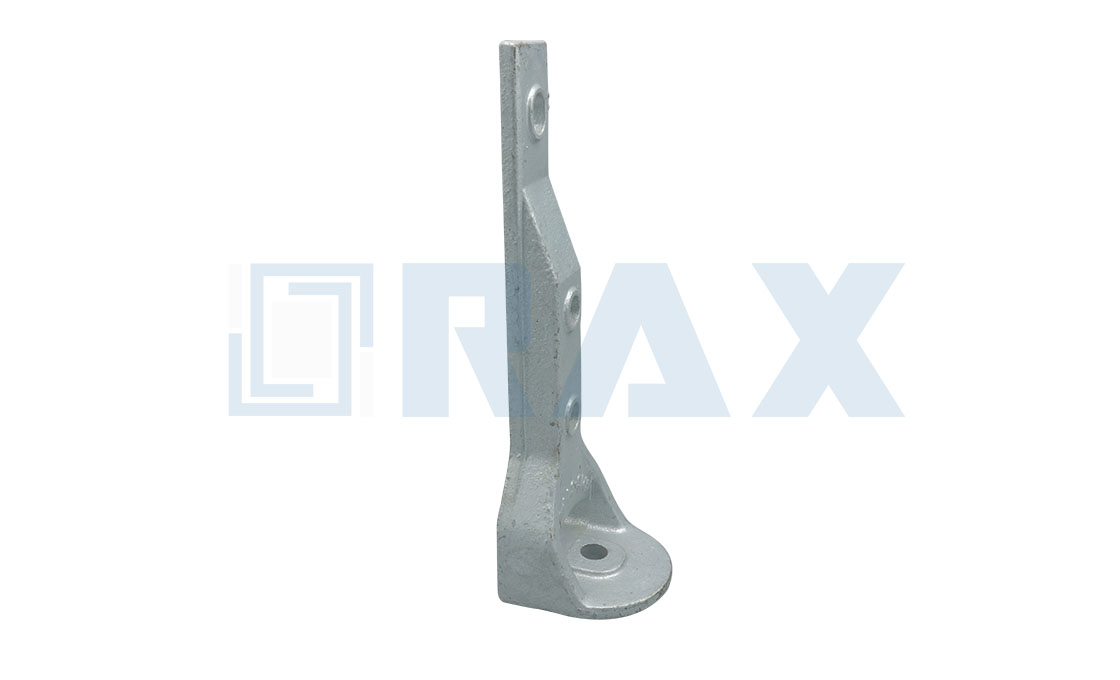 Pole Top Bracket
Pole Top Bracket
Rax Industry Power fitting Raw material
The main raw material in making powerline hardware is carbon steel. Some Rax Industry Power fitting is made from Aluminum, like tension clamp, suspension clamp, few powerline hardware is made of copper.
| Raw material
| Product | |
| 1 | carbon steel | |
| 2 | Aluminum | Such as tension clamp, suspension clamp |
| 3 | copper |
If you want to know more about the carbon steel types, you can reference here
To make powerline hardware, Rax Industry usually uses raw material angel steel, steel channel, flat steel, steel rod. The cross arm braces, pole bands, secondary clevis are made from flat steel 32mm*6mm, 50mm*5mm,38mm*6mm and so on. The alley arm, and electrical cross arm are made from angle steel. The main types used in making powerline hardware are Q235 or #45. Rax Industry usually chooses malleable and ductile carbon steel which isn’t easy to be crack when punching.
How to make Rax Industry Power fitting?
Rax Industry adopts casting, cold punching, hot punching, hot forged, forging, welding and heating to make powerline hardware.
The casting is usually devised into coated sanding casting, sand casting, melt casting, centrifuge casting, die casting. Rax Industry mainly uses sand casting to make the ball socket and ball clevis which need less than 70kn breaking load strength.
The main steps in doing sand casting are as below, mix the sand, make the mold, smelt the iron, pouring, cleaning, drilling, testing. Let me explain it step by step:
Step 1: Mix the sand
Use the sand mixer to mix the sand into a needed shape. At the same time mix some clay into the sand. The shaped sands have the cavity of the ball socket or ball clevis or the needed shapes. The final parts sizes depend on the mixed sand size.
Step 2: Making the mold
The mold size should be accurate to guaranty the final part standard. It usually takes 30-40days to make a new mold.
The mold should be amended or replaced after 5000 times used.
When the mold is ready, it will be assembled with the shaped sands.
Step 3: smelt the iron, pouring
Rax Industry workers use the furnace to heat the iron and smelt the iron into liquid. There is a special requirement with the liquid temperature and chemical consist.
Rax Industry workers use a special tool to pour the liquid into the mold which is mentioned in step2. The experienced Rax Industry workers can control the pouring speed very well. So that it will fill in the cavity with no extra space.
Step 4: Cleaning
Waiting until the liquid becomes solidification, knock off the shaped sanding with a hammer. To keep the surface smooth and uniform, the Rax Industry workers always clean the surface.
Step 5: Inspection
The QC team will inspect the finished powerline hardware if no problem, the parts will be sent to do the hot-dip galvanizing
Cold punching is used to make alley arm, cross arm brace, pole band, secondary rack, secondary clevis. The steel brace or steel plate is punched into a certain shape. For this progress, the mold is the most important. Because to make different powerline hardware, it will make a different mold. And a good mold design will save time and decrease steps.
After cold punching, it will weld some other parts to the final goods.
Hot forged is a process that is an advantage in keeping sizes accurate and higher breaking load than casting.
Compared with Power fitting suppliers in India, why customers prefer suppliers in Chinese
Raw material advantage: China is rich in a lot of iron ore. It’s no need to import raw materials from other countries. And it has the ability to make an iron ore to steel. The truth is that Chinese raw material is much cheaper than India
Technology advantage: Although China is on the way to passing by the demographic dividend, China still has an advantage in technology, such as hot-dip galvanizing technology, and automatical equipment.
Power fitting installation
There is a third party that takes part in the installation. During the installation, there are many points need to pay attention to.
- The sizes of the Power fitting should be exactly according to the drawing. The tolerance shouldn’t extra than +- 10%. If the size isn’t accurate, it will be difficult to assemble the power fittings together
- The breaking strength of the first assembled electric power fitting should be fit for the conductors’ mechanical strength
- The Power fitting types are selected according to the distance between two poles or the voltage of the power line.
Rax Industry Power fitting showroom photos
With 12 years of manufacturing experience, Rax Industry is proud of all types of powerline hardware. Rax Industry has a showroom of 120 square meters. On the showroom, it displayed all the power line accessories.
An Essential Guide to Power Fittings
Overhead power lines require specific components to function correctly. Some of the critical attachments are power line fittings. There are different types of electric accessories used in overhead lines, and each has a specific function. Therefore, you should consider the right quality of components and ensure it matches the purpose.
What are Power Fittings?
Power line fittings are electrical accessories used in electric grid systems to allow for mechanical attachments, electrical connections, as well as the prevention of damage to insulators and conductors. Typically, these fittings are designated as accessories and mainly come as an assembly of different elements.
In a standard design, fittings for conductors are directly connected to the conductors. They serve to terminate conductors, suspend or link two conductors. Some examples of conductor fittings include vibration protection accessories, bundle spacers, connectors, suspension and dead-end clamps to mention but a few.
On the other hand, insulator fittings and their related attachments are used in the connection of tension and suspension elements. The points of attachment are typically at a pivot or support point. In designs involving insulator sets, the components used in the connections fall under the power fitting category, excluding the insulators. Insulator fittings consist of all components attached between the suspension clamps or dead-end-clamp assembly and the first detachable element at the point of support.
Properties of Power Fittings
Electric power accessories used in overhead connections often get the beat from harsh weather conditions such as strong gales, rain, ice, high thermal conditions, etc. Before being distributed into the market, these fittings pass through a series of tests to ensure they withstand the vagaries of nature. The tests also help engineers in determining the working mechanics of different fittings. That involves design tests to make sure each accessory seamlessly attaches to its paired component.
Mechanical Properties
Mechanical properties determine the working mechanism of electric power fittings. Additionally, they define the correlation between a fitting and a conductor.
- The angle of Turn. The first mechanical property is the turning angle. The angle of turn must be precisely defined to ensure it does not break or distort while turning.
- Exertion force on the conductor. The pressure or amount of force a power accessory exerts on a conductor is another mechanical property to consider. Ensure that it exerts just enough pressure, so it doesn’t damage the conductor.
Material Properties
The material used in the manufacture of overhead power line accessories must meet specific standards. The level of hardness is the first thing you ought to consider. The material should have high-resistance to abrasive forces. It should also not show signs of breakage, deformation, or bending when hit by a hard object.
Corrosion due to oxidation is another destructive action on power line fittings. The material used in the production must have high-resistance to corrosive agents, as well as dents and dings due to scratches.
Regardless of the function of an electric fitting, manufacturers should put in place measures to control the quality of a component’s physical property. That’s why most brands utilize stainless steel, galvanized aluminum, and bolstered plastic materials formed through injection and forging processes using technologically-updated equipment. Furthermore, you should also consider the thickness of the material to allow room for corrosion.
Design Properties
Under design, we mostly consider the shape and structure of an object. In a conductor and insulator set, the design of a power pole hardware determines the relation between it and other components along the line.
The design should have accurate and precise dimensions to ensure the fitting moves smoothly along an insulator or conductor. With excellent precision in design, there will barely be any resistance force or friction hindering the movement. Besides, you should have an easy time installing it. There shouldn’t be a need to make any adjustments to fit it.
Another critical factor to consider under the design is the dimension: Both the diameter and the length. Once precise dimensions are achieved, the fitting can tightly attach to a conductor, preventing it from falling off.
Other design factors to consider are weight and the angle at which an accessory swings from a conductor. The problem with an overweight fitting is that it can cause fatigue to a conductor, hindering proper power transmissions. On the other token, the angle of swing must be specific to the type of accessory. For instance, suspension clamps have an allowance angle of 45 degrees.
Electrical Properties
Because power lines fittings form a critical part of overhead power grids, they must have excellent electrical properties.
One of the critical characteristics is the ability to overcome a fault current. A fault current occurs when two conductors form a short circuit which can potentially create power supply problems. Additionally, the accessory must not cause hysteresis loss. That’s the loss of electric current due to interactions between an electric and magnetic field.
Tips for Choosing a Power Fitting Manufacturer
There are many power-fittings manufacturing companies in the industry today. While some have a record of excellence in producing top-tier power pole hardware, some thrive in the production of counterfeit and low-quality fittings. Do not just buy power accessories bearing any brand. Here are some critical tips to help you find reputable power line manufacturers.
- Experience and Expertise. For how long has the manufacturing company been in business? Contact the manufacturer to gather information regarding their experience in the production industry. Select a brand that has been in operations for years. It indicates they can offer both simple and complex power line solutions.
- Production capacity. How much can the manufacturer supply? Whether you need a few fittings or a high-volume delivery, the company must have the financial power and resources to meet your demand level without compromising product quality. An effective way of approving a manufacturer’s capacity is by visiting their warehouse/ production facility.
- Accountability and Transparency. The manufacturer you select must be open and clear in his dealings. The labels and information on the package must be true. There should be clear communication. For accountability purposes, a manufacturer must back the product with a warranty to ensure it will be reliable for many years.
